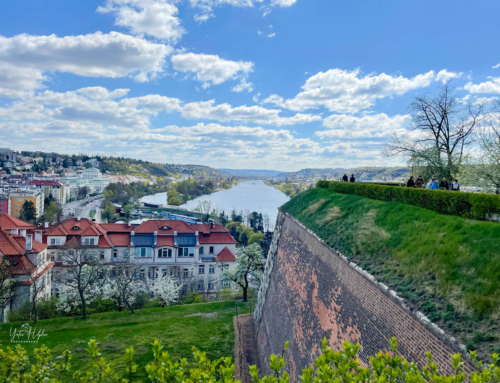Although The Netherlands is the country’s official name, most of the rest of the world calls it Holland. However, Holland actually comprises only two of the 13 Dutch provinces. North and South Holland contain the country’s three main cities of Amsterdam, Rotterdam and Den Haag (The Hague), which together with the cities of Dordrecht, Utrecht, Leiden and Haarlem form a horseshoe-shaped conurbation known as the Randstad, literally, “rim city”.
When people ask, “What is the capital of the Netherlands?”, the smiling Dutch tend to reply: “Our capital is Amsterdam, and the government sits in The Hague.” Amsterdam is the most cosmopolitan of these three cities, as well as the country’s centre for cultural life. Rotterdam, home to the Europoort, one of the world’s largest ports, is the Netherlands’ industrial centre. The Hague is the seat of government and quarters many prestigious institutions, including the International Court of Justice. With its neighbouring seaside resort of Scheveningen, The Hague is where most of the foreign embassies and consulates are situated.
1. Bike Ride

Cycling in Amsterdam is the most authentic way for any visitor to see the city. Amsterdam is perfectly set up for getting on your bike – there are around 515km (320 miles) of dedicated cycle lanes. Amsterdam is routinely rated as the world’s 2nd most bike-friendly city, just behind Copenhagen.
Cycling is deeply ingrained into the Dutch psyche at all levels of society – not surprising when you consider how flat most of the country is.
The Netherlands has a population of 17.2 million people and about a quarter of those (4.25 million) cycle every day. There are actually more bikes than people – 22.8 million bikes or about 1.33 bikes per person.
On any working day between 8am and 9am in the morning almost 2 million bikes will be on Dutch roads! With so many bikes around it’s not surprising to note that bike theft in Amsterdam is rampant – over 200 bikes a day are stolen. You may be approached by a ‘dodgy’ stranger on the street offering to sell you a bike for maybe €20 – don’t think about it as these are stolen and you risk a fine as well as perpetuating this criminal activity.
Due to risk of theft, many people ride battered old cycles for normal use around town. Most Dutch cyclists will also own a more expensive bike for touring – given that there are 100,000 km of well marked cycle routes around the country.
Many locals cycle in an assertive (if not ‘kamikaze’) manner and they travel at good speed very close to each other. They will often ignore red lights, they will pull out from side streets without looking, they will shout “Ja, Hallo!” in annoyance if you inadvertently walk into the cycle lane and they will park their bike in the middle of the pavement on a busy shopping street!
If you want to ride a bike around the city it does take a bit of practice to get up to speed with the locals – so take some care initially. A lot of bad cycling seen in the centre of Amsterdam is actually done by inexperienced tourists who may not do much bike riding at home.
You should always follow the traffic rules (including obeying the special cycle traffic lights), be careful crossing tram tracks (do so at an angle) and watch out for trams, pedestrians and other cyclists.
Don’t put on headphones whilst cycling – you need to hear what’s around you. Stick to the designated cycle lanes – do not ride on pavements, squares or pedestrianised ways.
Note that the most basic Dutch bikes have a single gear and use back-pedal brakes which takes some getting used to if you are accustomed to hand brakes.
There are a number of secure bike parking facilities run by the council – with the following locations in the centre of Amsterdam:
Beursplein, Rokin, Oosterdok, OBA (library), Reguliersdwarsstraat, Pathé De Munt, Leidseplein, Ferdinand Bolstraat, Ceintuurbaan, De Hallen
Bike Rental in Amsterdam
Renting a bike is straight forward and will set you back from around €10 for a day rental for a basic back-pedal single gear bike. Cheaper rates per day can be had if you rent for a longer period or rent in a group. Theft insurance is charged at around €3 supplement per day, worth taking for peace of mind. Bikes with hand brakes and gears are a little more expensive.
E-bikes will cost around €33 for a day.
You will generally need to leave a form of ID, a deposit (€50-€200) or a credit card authorisation. Some rental companies mark their bikes with logos whilst others have unmarked bikes. There are a number of rental outfits around the city, prices are similar and delivery (to your accommodation) is sometimes possible.
A few companies also offer guided tours which can be a great way to discover the city/region with an experienced local guide.
Amsterdam Bike Rental Shops
MacBike – De Ruijterkade 34/Oosterdokskade 63A/Waterlooplein 289/Overtoom 45
2. Windmills

For centuries, windmills have helped the Dutch fight water. And also saw trees into planks and beams. Which was important for shipbuilding since the Dutch were a large naval power at that time. In the glory days, the Netherlands had more than 10,000 windmills and today around 1,000 still stand. Many of the remaining mills are open to the public and a couple have even been transformed into homes.
Windmills inside Amsterdam city
Contrary to popular belief, you don’t even have to leave Amsterdam to see this little piece of Dutch heritage up close. Like most things in a multidimensional city, everything is literally at your doorstep or just a short bike ride away.
There are in fact 8 windmills in Amsterdam. This may come as surprise even to the locals.
3. Clogs
Clogs date back to the early 13th century in the Netherlands. They were designed to protect the feet of factory workers, artisans, farmers, fishermen, and other trade jobs.
Clogs were originally not made entirely from wood but had only a wooden sole with leather strapped over the top. But these were not very protective, and soon the entire shoe was carved out from willow or poplar. Nails, hooks, and sharp objects cannot penetrate the wood, and muddy fields are easier to navigate in clogs than regular boots. The European Union has even declared it an official safety shoe — now that’s hardcore!
Different professions had slightly different shaped clogs. Those who dug out peat on farms would have a larger, squarer nose on the clog to stop them from sinking into the mud. Fishermen would have sharp, pointy clog noses to help sort out fishing wires. Worker’s clogs were plain and undecorated.
But clogs weren’t only about hard work. Wooden shoes were also made for wearing around the house, and the more lavishly decorated clogs were even worn to churches and weddings. At one point, it was custom for men to propose to their fiancé with a pair of beautifully carved shoes!
Clogs today
If you imagine hoards of Dutch people click-clacking around in wooden shoes across the canals and cobbled streets of the Netherlands, I’m afraid I must burst your bubble. The only clogs you’ll see in Dutch cities these days are brightly painted tourist shop editions, which locals would never buy.
4. Zaanse Schans
Looking around you at the Zaanse Schans, you will see nothing but history. A feeling of nostalgia, no, more than that, a slight feeling of homesickness will strike you when you see the wooden facades, the slit windows and the low doors. Here, centuries of memories are like footprints of history resounding in each chamber. Hundreds of years ago, people slept, cooked, laughed, cried, loved, argued, were born and died within these walls. And still the Zaanse Schans lives on, because all premises are lived in.
The Zaanse Schans is a residential area in which the 18th and 19th centuries are brought to life. Despite the fact that visitors from all over the world visit this neighborhood every day, it is good to know that people still live here. Keep this in mind during your visit. Stroll past the bakery museum and enjoy the smell of fresh cookies, or take a look at the warehouse where clogs are made. You should be sure not to miss the cheese factory, pewter foundry and the various windmills. The Zaanse Schans is a unique part of the Netherlands, full of wooden houses, mills, barns and workshops. Make a cycling or sailing trip, browse the shops or treat yourself at the pancake restaurant. A day out at the Zaanse Schans in North Holland is fun and educational.
5. Royal Palace Amsterdam

Supported by a staggering 13,659 wooden piles, Jacob van Campen’s Classical building occupies one side of Dam Square. Designed as the stadhuis (town hall), it was transformed into a Royal Palace in 1808 by King Louis Bonaparte. Although it is still used for official functions, such as the wedding reception of Crown Prince Willem-Alexander in February 2002, the present royal family live elsewhere. It is now open to the public.
6. Madame Tussauds Amsterdam

Madame Tussauds Amsterdam is a wax museum situated in the capital city of the Netherlands. It is located in the centre of the city on Dam Square, near the Royal Palace of Amsterdam. Founded in 1970, it was the first Madame Tussauds that was opened in mainland Europe as well as being the first foreign branch of the British institution. The collection of Madame Tussauds Amsterdam consists of a collection of wax figures of famous celebrities in different categories such as the Golden Age of Dutch history, music, sport and film.







